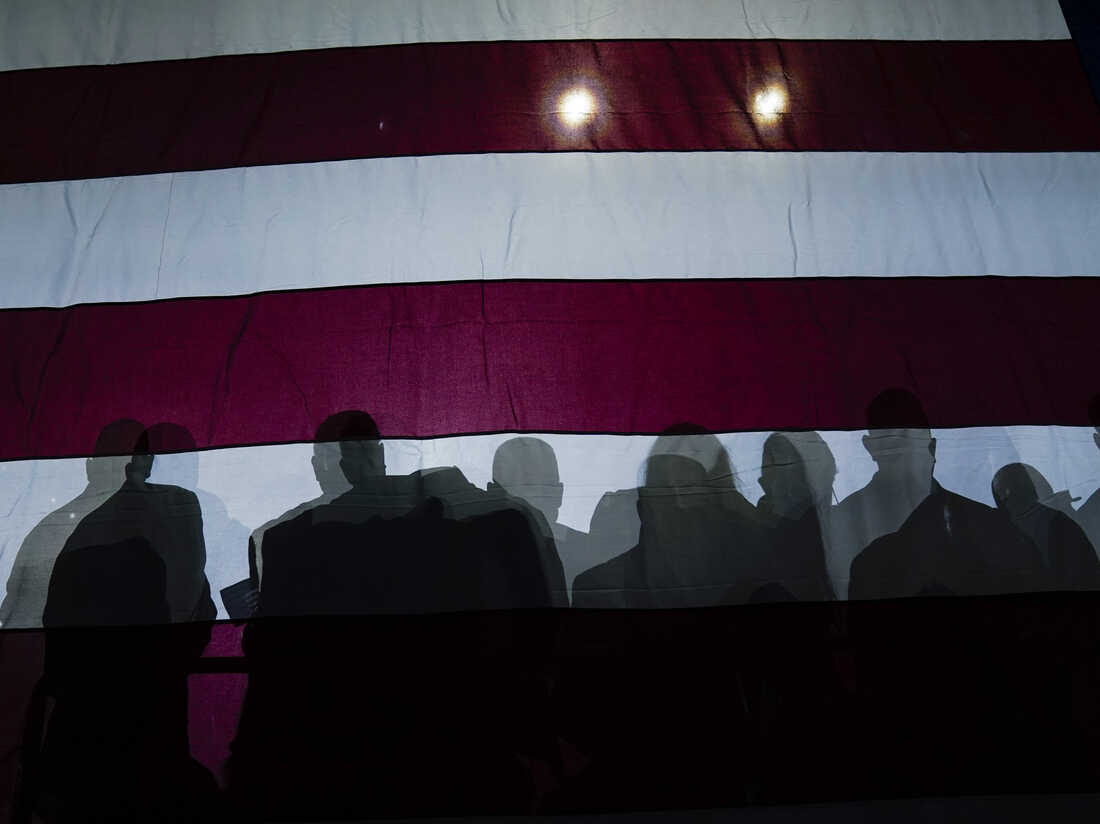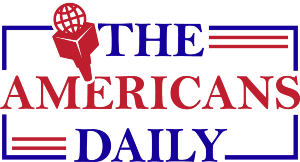The United States functions as both a democracy and a republic. Citizens elect representatives within a structured framework of constitutional law.
The United States is often immersed in a debate regarding its form of government. Many consider it a bastion of democratic principles, while others emphasize its republic characteristics. Contentions aside, the U. S. Operates under a representative democracy, where elected officials make decisions on behalf of the people, adhering to a constitution that enshrines the rule of law and the rights of individuals.
This political system blends democratic ideals with the structured governance of a republic. Ensuring a balance between majority rule and the protection of minority rights, the U. S. Constitution provides a nuanced framework within which the nation functions. This symbiosis between democracy and a republic ensures that while the voice of the people is heard, the foundational laws remain paramount, guiding the nation through complex political landscapes.
Introduction: The Debate On The American System Of Governance
The question of whether the United States is a democracy or a republic sparks lively debate. Understanding the governing system of the nation is vital. It shapes how Americans view their identity and their system’s structure. This discussion reaches back to the founding of the country and remains relevant today.
Clarifying Common Misconceptions
Many use the terms “democracy” and “republic” interchangeably. Yet, they carry distinct meanings. A deep dive into these terms is crucial for clear understanding.
- Democracy – often seen as a system where people have direct say in decisions.
- Republic – generally characterized by representation, where officials make decisions.
In the U.S., elements of both are present. This blend often leads to confusion.
Historical Perspectives On Democracy And Republic
Exploring historical views offers insight into the foundations of the U.S. governance. The Founding Fathers debated about the ideal system.
| Historical Figure | View on Democracy | View on Republic |
|---|---|---|
| James Madison | Warned of factions | Promoted a large republic |
| Alexander Hamilton | Feared mob rule | Favored representative model |
| Thomas Jefferson | Valued citizen participation | Believed in checks and balances |
These historical insights illustrate the complexity within America’s system of governance. The U.S. Constitution reflects a balance between democratic ideals and republican structures.

Credit: www.npr.org
Defining Democracy And Republic
Many people ponder whether the United States is a democracy or a republic. This section unveils the essence of both terms. Understanding these systems helps us grasp the foundation of American governance.
The Concept Of Democracy: Key Characteristics
A democracy stands on the idea that power lies with the people. Here, every citizen has a say in the matters of state. Typically, we see a few distinct features in a democratic nation:
- Majority Rule: Decisions reflect the will of over half the voters.
- Equality: Every vote has equal weight.
- Free and Fair Elections: Leaders are chosen through a transparent process.
- Active Participation: Citizens are involved in political processes.
- Human Rights: Freedoms are protected.
- Rule of Law: Laws apply equally to all.
The Republic Defined: Principles And Structure
A republic, on the other hand, relies on representatives. In this arrangement, elected persons make decisions on behalf of the people. Key principles shape its structure:
- Sovereign State: Power is held by the population but exercised through elected officials.
- Constitution: This document outlines the rights of citizens and the powers of the government.
- Rule of Law: Even rulers must follow the laws.
- Separation of Powers: Divides government into branches to prevent abuse of power.
- Checks and Balances: Each branch can limit the powers of the others.
| Aspect | Democracy | Republic |
|---|---|---|
| Decision-making | By majority of citizens | By elected representatives |
| Rights Protection | By the will of the majority | By the constitution |
| Law Creation | Reflects current majority | Based on constitution |
| Power Structure | Unified | Separation of powers |
Clarifying the differences between democracy and republic broadens our understanding of government systems. The US builds on both, shaping a unique blend for self-governance.
Evolution Of American Governance
As we delve into the ‘Evolution of American Governance’, it’s essential to understand the roots of the United States political system. This journey starts with the vision of the Founding Fathers and spans the intricate designs outlined in the Constitution and the Federalist Papers, offering insights into the blend of democracy and republicanism that shapes American politics today.
The Founding Fathers’ Intent
The creators of the American system sought a unique government. They aimed to avoid tyranny. They wanted to protect individual freedom. Their blueprint was revolutionary. They believed in a ‘government of the people, by the people, for the people’. Thus, they laid down the groundwork for a system that was both a republic and a democracy. Representation and popular sovereignty became key tenets of their plan.
Constitutional Elements And Federalist Papers Insights
The Constitution provides a framework for governance. It combines representative democracy with a federal republic structure. The Federalist Papers further elucidate this structure. Authored by key figures such as Hamilton, Madison, and Jay, these documents argue for a strong, yet accountable, federal system.
- Separation of Powers: Creates checks and balances
- Federalism: Divides power between national and state governments
- Indirect Election: An Electoral College system to balance between populous and smaller states
These elements reflect the Founders’ vision for a balanced government that maximizes liberty and limits power concentration.
Characteristics Of The U.s. Political System
Understanding the nuances of the United States’ political system is fascinating. It offers a blend of democratic and republican elements. It’s essential to cover key traits that define its governance.
Electoral Processes And Representation
The United States prides itself on structured electoral processes. Elections stand as the cornerstone of democracy. Elected officials represent the public’s voice at local, state, and federal levels.
- Federal elections occur every two, four, and six years for the House, presidency, and Senate.
- State and local elections can vary but abide by democratic principles.
- Citizens above age 18 can vote, reflecting inclusivity in political participation.
Elected representatives create, debate, and pass laws.
Electoral colleges in presidential elections reveal the republic nature.
The Role Of Individual And States’ Rights
The balance of power is unique in the United States. It respects individual and states’ rights within the federal framework.
Individual Rights:
- Freedom of speech, religion, and press.
- Right to a fair trial and protection under the law.
- Vote and participate in governance.
States’ Rights:
| Aspect | Detail |
|---|---|
| Educational Systems | Flexibility to design school curriculums. |
| Infrastructure | Control over public works projects. |
| Healthcare Regulations | State-specific healthcare policies. |
The Tenth Amendment underscores states’ powers.
Federal government retains certain enumerated powers.
Comparative Analysis: U.s. System Vs. Other Models
The United States often sparks debate on its form of government. People discuss if it’s a democracy or a republic. These terms are complex. Understanding them needs a closer look.
Subheading 1: Direct vs. Representative DemocraciesDirect Vs. Representative Democracies
Democracies allow people to vote on laws directly. In direct democracies, citizens have the power. They make decisions without representatives. The U.S. model is different. It uses a representative democracy. This means people choose leaders. These leaders make decisions for them.
Key Differences:
- Direct Democracy: Voters decide on policy initiatives directly.
- Representative Democracy: Elected officials represent a group of people.
Comparing To Other Republics Around The World
Countries across the globe use the republic model. Each has unique features. The United States is a federal republic. It mixes democracy with a state-system. Other countries are different. Some have a unitary system. It means most powers are at the national level.
Republic Models:
| Country | Type of Republic | Key Characteristics |
|---|---|---|
| France | Unitary Republic | Centralized power, strong executive branch |
| Germany | Federal Republic | Power shared between national and state governments |
| India | Federal Republic | Combines the principles of federalism and republicanism |
Contemporary Perspectives On U.s. Governance
When exploring the Contemporary Perspectives on U.S. Governance, it’s key to understand the complex nature of how the United States identifies itself. This debate often centers on two concepts: democracy and republic. Both terms describe the country’s political system, but they reflect different aspects of its governance. Perspectives vary widely across the spectrum of American political thought and public discourse.
Public Perceptions And Misunderstandings
Public perceptions about U.S. governance often reveal a mix of misunderstandings and half-truths. Surveys show that some citizens tightly hold to the notion of the U.S. being a pure democracy. This is not entirely accurate, as the U.S. features strong elements of a republic, especially in its representative democratic structure. These misunderstandings stem from a range of factors, including the education system, media portrayal, and personal beliefs.
- Americans commonly use ‘democracy’ to describe freedom and participation.
- Term ‘republic’ highlights the aspect of elected representatives and law.
- Educational systems can sometimes gloss over the nuanced differences.
Impact Of Political Rhetoric On Definitions
Political leaders have a profound impact on how governance is understood. Through speeches and policy discussions, they shape the narrative. This political rhetoric often simplifies complex political structures to resonate with the public, which can lead to shifting definitions in the public’s mind. It’s crucial to acknowledge the role of this rhetoric in framing the democracy-republic debate.
Consider the following table highlighting examples of how political rhetoric influences perceptions:
| Rhetorical Approach | Impact on Public Perception |
|---|---|
| Emphasizing democratic values | Augments the belief in majority rule |
| Stressing constitutional republic | Reinforces the importance of law and representatives |
| Campaign slogans focusing on voting | Enhances the perception of direct democracy |
Continual use of such rhetoric ingrains these definitions in the public conscience, altering the way American governance is fundamentally understood.
Conclusion: Understanding The Dual Identity Of The United States
Understanding the dual identity of the United States reveals a unique blend of democracy and republic. This complex political structure shapes governance and influences policy-making. Recognizing the distinctions and interplay between these principles is critical for grasping how America operates.
Synthesizing The Democratic And Republican Elements
The United States encapsulates democratic ideals through its open elections and citizen participation. In parallel, its republican characteristics emerge with elected representatives and a constitution that limits government power. This synthesis ensures a balance, empowering people while safeguarding individual rights.
Democratic elements:
- Free and fair elections allow citizens over 18 to vote.
- Majority rule applies in decisions, with minority rights protected.
Republican elements:
- Elected representatives make laws and decisions for the people.
- The Constitution provides a framework to limit governmental authority.
Future Implications For American Political Discourse
As society evolves, so too will the interplay between democracy and republicanism in America. The nation must navigate shifting demographics, technology’s impact on elections, and the increasing calls for direct representation. This future political landscape will test America’s ability to maintain balance between empowering its citizens and ensuring a stable, governed society.
Key future considerations:
- Digital tools may enhance citizen engagement and voting accessibility.
- Emerging social issues could drive calls for referendums and initiatives.

Credit: cd.usembassy.gov

Credit: www.etsy.com
Frequently Asked Questions For Is The United States A Democracy Or A Republic
Is The Us A Republic Or A Democracy?
The US is both a republic and a democracy. It operates as a representative democracy, where elected officials serve the populace, within a republican structure that safeguards against majority rule over minority rights.
Is The United States Truly A Democracy?
The United States operates as a representative democracy, where elected officials govern in the interest of the people. Citizens exercise their power through voting, making the U. S. a democratic republic rather than a pure democracy.
Was The United States The First Republic?
No, the United States was not the first republic. Ancient Rome and the Vaishali Republic in ancient India predate it.
What Is An Example Of A Republic Government?
An example of a republic government is the United States of America, where elected representatives serve the citizenry’s interests and uphold the Constitution.
What Defines A Democracy?
Democracy is a system of government where citizens exercise power by voting and participate directly in decision-making.
Conclusion
Understanding the distinctions between democracy and republic frameworks is key to grasping U. S. Governance. Clearly, the U. S. Interweaves elements of both systems, standing as a democratic republic. As citizens engage in elections, a balance between majority rule and individual rights shapes the nation.
This blend defines the American political identity, fostering a robust and adaptive political landscape.

